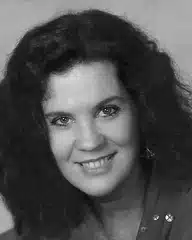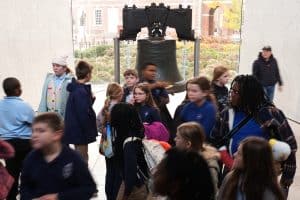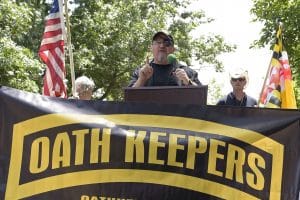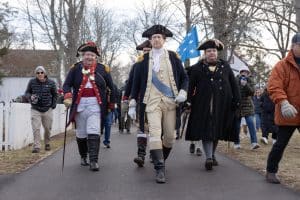“I wanted to be a warden,” explained Porscha Adams, as she sat in the conference room at Valley Youth House’s Warminster shelter. Adams, the first Black female intern at McKeen County Prison spent more than a year shadowing the warden, correctional officers and infirmary staff. Of all these experiences, she preferred working with inmates in the re-entry program. As they prepared to leave the jail, she heard the same refrain, again and again. “I wish someone wouldn’t have given up on me.” Or, “I wish someone hadn’t just labeled me a bad kid.”
Adams took advice from the inmates and shifted her focus. “I left to help stop the creation of lost causes.” Adams is now a Clinical Supervisor working with children aged 11 thru 20. She counsels run-aways and their families, as well as other kids experiencing homelessness.
Valley Youth House (VYH) Bucks County shelter is a 13-bed facility. Kids without homes – or kids that have fled the home they did have – can stay at the shelter for a very limited time.
Generally, kids experiencing homelessness get 30 days to relocate either to the foster care system, caring adults or some form of Supervised Independent Living (SIL). Adams explains, “It’s hard to put a 16- or 17-year-old in a home when they’ve been living on their own.”
Runaways get less time. It’s Adams’ job to counsel the child and their parents so that she can recommend a home plan. “If mom and/or dad are unfit, we involve children and youth.” Adams refers to the Pennsylvania Department of Human Services’ Office of Children, Youth, and Families, an agency that works inside the family structure whenever possible.
Sadly, it’s not always possible. Adams concludes, “For abandoned kids, we must make a Childline report. Then the kids enter the system.”

At VYH there is one staff person for every eight children. For 11 years, Program Supervisor Christine Caines has been one of those staff members. After all the time she’s worked to protect the children in her care, Caines knows better than anyone how difficult it can be to hire just the right people to work with traumatized unaccompanied youth. “We are very careful when selecting our staff,” Caines explains. VYH employees “could make an indelible impression. We don’t want one that’s negative. At VYH we have 3800 regulations to keep kids safe. We need people who will learn the rules, follow the rules and model the rules.”
Caines defines VYH as a “transitional place to get you where you need to be. There is a system, and we are not the system. Kids wish we were a long-term placement.” Caines adds, “Some of these kids need an education for specific needs, be they situational depression, clinical depression,” or dealing with the aftermath of trauma.
Adams says empathy is essential. Kids aren’t necessarily “just being difficult” when they refuse a direct order. “If you don’t understand trauma, you don’t understand why they don’t want to shower – what might have happened in the shower [in the past].”
Caines understands the need for compassion, someone to be kind. “Some days I still look up and know I need my mom, or my grandmom.” Caines also knows that many of the children in her care have neither.
Diane Nilan, a National Homeless Advocate and an architect of federal McKinney-Vento legislation passed in the early 2000s guaranteeing children and youth experiencing homelessness access to school, speaks passionately about unaccompanied youth. She cites the fact that many shelters refuse to take children – boys especially – over the age of 12. “Because emergency resources are extremely rare for homeless families, especially if they have older kids, the families split up.”
In 2009, the HEARTH Act (Homeless Emergency Assistance and Rapid Transition to Housing) passed congress. If fully implemented, the legislation would have penalized HUD funded agencies that ejected teens based solely on their age. But according to the National Homeless Law Center, as yet, “no court of law has yet deemed this program as creating a right to shelter.” It’s worse in privately funded shelters, where they have absolutely no requirement to accept children or teens.
Nilan also acknowledges the ugliest truth of all – that some children are victims of domestic violence, human trafficking or both. “For reasons too horrific to describe, the youth end up leaving abusive homes and toughing it out on their own. They’re left to deal with unimaginable trauma while also struggling to survive homelessness.”
Adams and Caines related stories of children trafficked from foreign countries who found themselves in Bucks County needing a home. “When we get international clients, we call Childline, automatically.”
Still, it’s nearly impossible to place trafficked undocumented youth. One young person from northern Africa lived at VYH for more than a year. Adams said that keeping him at VYH and keeping him safe was the only rational course of action. “Rather than sending him home to Egypt.” She knew he would be vulnerable if returned. “He ran to avoid the consequences of his lifestyle choices. Back home someone would have hurt him.”
Local kids are trafficked, too. A young Pennsylvania woman fled to VYH because her trafficker kept finding her when she went home. “She had a tattoo of ownership.” Adams interrupted herself to add, “Sometimes we go with them to get their tattoos covered… you know… inked out.” The girl’s trafficker kept kidnapping her every few days for several days at a time. The girl let her mom believe that she had been running away.
Adams said that no one close to the victim understood, “until the girl felt safe, and comfortable telling her story.” When the truth came out, VYH revealed that she hadn’t told her mom because her trafficker had threatened to hurt the mom if she did.
The staff at VYH have very specific jobs to do, but they do a lot more, too. From helping a young person style their hair to, “painting a child’s walls because the color of the room we gave them was the same color as the room where she’d been kept captive and abused.”
READ: Pennsylvania Takes Important Step to Protect LGBTQ Youth By Repudiating ‘Conversion Therapy’
Sometimes the staff must accompany the residents to gynecological visits. Often, they go in person to pick up a runaway child and bring them in.
Caines and Adams both want society to invest more in the children they see. “The system is failing people. Important supports are underfunded – like therapy services.” Adams, who counsels the children and their parents, feels the pinch of limited resources. “I can only do talk therapy. But play, art and music therapy are better for children. Insurance won’t cover that; they only cover talk therapy. Or there is no access at all.”
Caines adds, “The resources aren’t out there for the rest of these kids’ needs. People are expected to heal themselves.” Sighing she adds, “But the saying is correct. Hurt people do hurt people. It’s a cliché but true.”
Adams adds, “And parents have to heal themselves before they further harm their children. We have a lot of runaways because parents refuse to understand the choices kids are making. Kids deserve to be apologized to. That’s how they learn to apologize.”
Often children who identify LGBTQIA+ get kicked out. Adams doesn’t understand how a parent can do that. She asks rhetorically, “You don’t just want to love your child?”
In the end what’s the goal of VYH? Caines says, “We want them to go back to their home schools. Our program is built to give them life skills and to understand each other’s cultural differences.”
That’s no small order in a society that views most homeless youth as trouble. Nilan has spent forty years fighting that perception. “Youth homelessness, if people even consider it, too often gets wrongly judged. Seeing an unkempt young person asleep on a park bench typically conveys the image of a slacker. What most people don’t realize is these kids are incredible survivors.”
Knowing that – according to the U.S. Department of Education – there are millions of school-aged children and youth experiencing homelessness, Nilan concludes, “We must be an incredibly rich nation to throw away our children.”
At VYH, Adams, Caines and their colleagues do their best to catch those throw-aways and get them back on their feet. “We run through a lot of youth,” Caines remarks. “But I’m gonna treat that child the way I treat my own kids. If my kids ever had to go to a facility, I know how I’d want them treated.”
Adams adds, “And we have successes. They often come back to show off. One young woman came back to say, ‘hello.’ She’d graduated school and had an apartment and a baby. She told us that she’s so glad she went to therapy, to learn it’s not her fault.”
For the ones that don’t land on their feet. If they stay in touch, VYH still helps. Caines says that whenever they can, they try to be a resource. “We make care packages for people who used to be here. Who are still struggling.”
If you or someone you love is at risk, VYH encourages you to reach out:
If this is an emergency/you are in crisis or danger, please dial 9-1-1 or call the crisis hotlines listed below or here: https://valleyyouthhouse.org/resources/
National Suicide Prevention Lifeline: Call or text 9-8-8
National Human Trafficking Hotline: Call 1-888-373-7888
National Runaway Safeline: Call 1-800-RUNAWAY (1-800-786-2929)
Crisis Text Line: Text HOME to 741741
If you’d like to help the children staying at VYH, they have a wish list for needed items.







